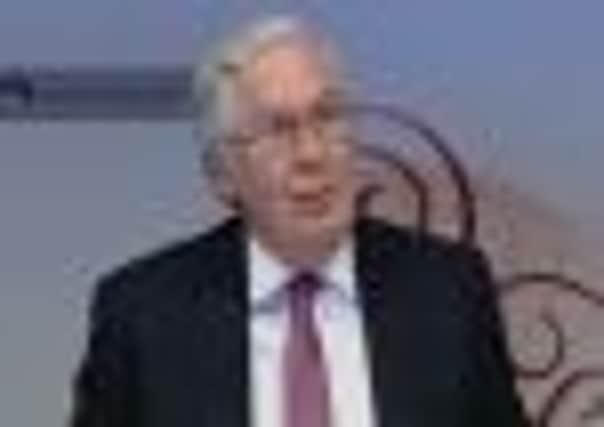Sir Mervyn King calls time on ten turbulent years, the ‘Sun King’ of Threadneedle Street


However, Sir Mervyn has been called on to write “mea culpa” letters – 14 in total – to George Osborne and his predecessor as chancellor, Labour’s Alistair Darling, explaining why the Bank has missed its inflation targets, veering away from its 2 per cent target, in 40 out of 60 months over the past five years.
He has often been embroiled in controversy – being both outspoken about the banking industry, but facing accusations that he failed to take appropriate pre-emptive action to lessen the impact of the financial crisis.
Advertisement
Hide AdAdvertisement
Hide AdHe was criticised for precipitating a run on the banks by refusing to give funding to Northern Rock. He later justified this by claiming that the Bank of England should be regarded as the “lender of last resort”.
He also said the Bank had “prevented a great depression” by cutting interest rates.
His Mansion House speech of 2009 is often cited as the moment the Bank of England lost its political neutrality and was regarded as boosting the Conservative Party in the run-up to the 2010 general election.
In July, it emerged that four years previously he had been warned by Timothy Geithner, the then head of the New York Federal Reserve Bank, about potential rate-fixing, warning of irregularities in the Libor inter-bank lending.
Last week, he clashed with his deputy at the Parliamentary Commission on Banking Standards when he said that banks no longer adopted a “reckless casino” approach to their activities. However, Sir Mervyn also said that plans to force a ring-fencing of the banks’ investment arms from their high-street operations would need to closely regulated.
Sir Mervyn was born in Buckinghamshire, the son of a railway worker who retrained as a geography teacher. Grammar school-educated, he gained a first-class degree in economics from King’s College, Cambridge, in 1969.
He is a Fellow of the British Academy, an Honorary Fellow of King’s and St John’s Colleges, Cambridge, and holds honorary degrees from Edinburgh and many other universities.
He married his wife, a Finnish interior designer, in Helsinki in 2007.